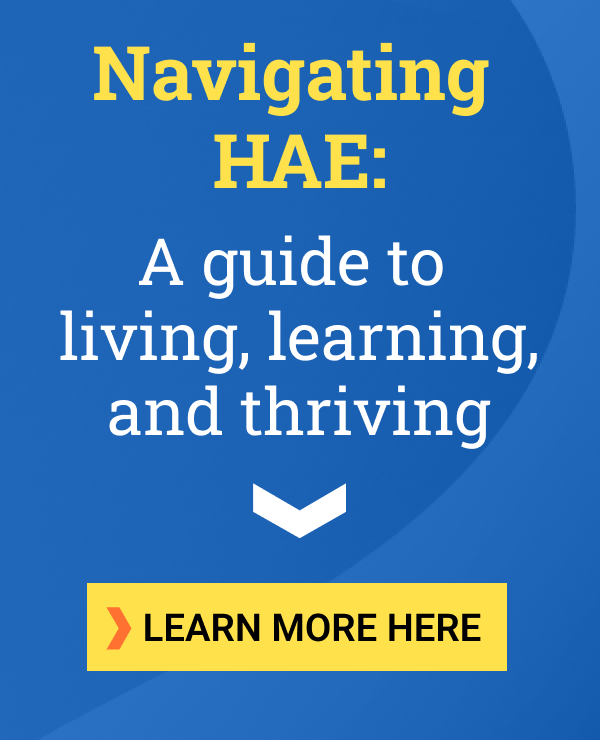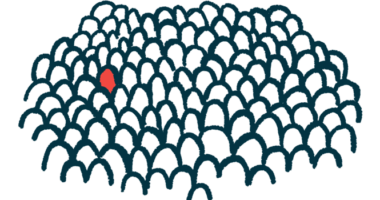One NTLA-2002 dose lowers rate of monthly HAE attacks by 98%
Treatment also led to sustained reductions in levels of kallikrein enzyme

NTLA-2002, the investigational gene-editing therapy from Intellia Therapeutics, reduced the number of monthly swelling attacks by a mean of 98% among people with hereditary angioedema (HAE) who were treated in the Phase 1 portion of an ongoing Phase 1/2 clinical trial.
The one-time treatment also led to sustained, dose-dependent reductions in blood levels of kallikrein, an enzyme that’s overactive in HAE. While mild infusion-related reactions were reported, they were mostly mild and resolved within two days.
“These unprecedented data strengthen our view that NTLA-2002 could be a groundbreaking treatment for people living with hereditary angioedema,” John Leonard, MD, Intellia’s president and CEO, said in a company press release. The company presented the findings in an oral presentation at the recent European Academy of Allergy and Clinical Immunology (EAACI) Congress in Valencia, Spain.
HAE is mainly caused by mutations in the SERPING1 gene, resulting in a deficiency or dysfunction of the C1-inhibitor (C1-INH) protein, which normally blocks the activity of kallikrein, an enzyme that controls the production of bradykinin. When too much bradykinin is produced, blood vessel permeability increases, causing fluid to flow into nearby tissues, leading to swelling attacks.
Treatments for HAE include preventive and/or on-demand therapies, which often require chronic dosing to help keep swelling attacks under control. Despite treatments, sudden HAE attacks may still occur.
NTLA-2002 uses the CRISPR/Cas-9 gene-editing tool to disrupt the activity of the KLKB1 gene, which provides instructions to produce a kallikrein precursor called prekallikrein. This should reduce the production and activity of kallikrein, and thereby of bradykinin levels. A single treatment should prevent swelling attacks.
HAE attack rate dropped with NTLA-2002
The therapy is being tested in a Phase 1/2 study (NCT05120830). In Phase 1, 10 HAE patients, ages 26-73, were given one of three doses — 25, 50, or 75 mg — as a single infusion into the vein, or intravenously.
The patients were followed for a primary observation period of 16 weeks, or about four months, up to about two years.
Newly reported data after a median of 20.1 months, or almost two years, after treatment, showed a 98% mean reduction in the rate of monthly attacks. There was also a mean reduction of 99% in the rate of moderate to severe attacks and a mean 97% reduction in the rate of attacks requiring treatment.
Attack rate reduction was persistent, with eight patients remaining attack-free for at least 18 months. Of the two who had an attack after the primary observation period, one had a mild attack that didn’t require treatment and another had a moderate attack. All those who discontinued other preventive treatments after receiving NTLA-2002 remained free of chronic preventive treatment thereafter.
The two patients with the highest rate of monthly HAE attacks at the start of the study (16.8 and 14.0 attacks per month) were attack-free after the primary observation period and have remained free of attacks through the latest follow-up (20.4 and 23.5 months, respectively).
“After a single dose of our investigational in vivo CRISPR-based therapy, patients experienced durable elimination of their attacks. We are thrilled to see that the majority of patients have been attack-free for over 18 months or longer. These remarkable attack rate reductions have been consistent, even in patients with the most severe symptoms,” Leonard said.
As reported, treatment led to a sustained dose-dependent reduction in kallikrein levels. The mean reduction was of 60% in patients who received the 25 mg dose, 88% in those receiving 50 mg, and 95% with 75 mg.
Safety results of NTLA-2002
The therapy continued to be well tolerated, with most reported side effects being mild to moderate in severity. The most commonly reported ones were infusion-related reactions and fatigue, which were generally mild and resolved within two days.
“These long-term data provide strong evidence that NTLA-2002 could be a one-time, potential functional cure for this debilitating and life-threatening disease,” Leonard said.
After the the Phase 1 study is completed, participants may enroll in a long-term safety and efficacy study.
The company plans to report topline data from the Phase 2 part of the trial, which is testing the therapy against a placebo, later this year. The trial completed enrollment and started dosing patients last year. The company also expects to start a pivotal, Phase 3 trial of NTLA-2002 in the second half of the year, subject to regulatory feedback.








